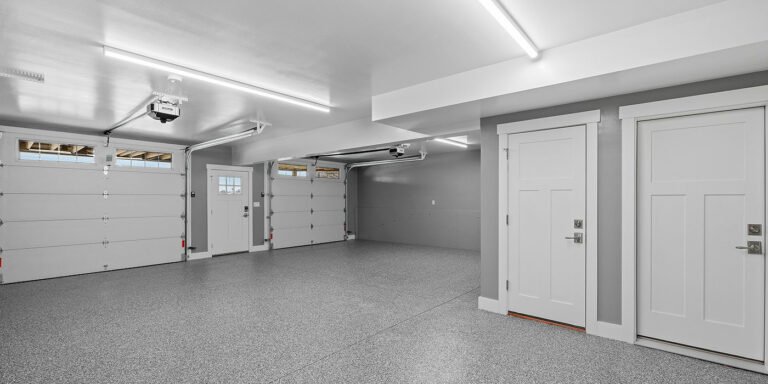Our monthly home maintenance checklists can help you stay on top of routine home care and prevent issues down the road. Keep reading to find out what you should include on your fall maintenance checklist, both indoors and outdoors, to prepare your home before winter sets in.
Reverse ceiling fan
Change the direction of your ceiling fans to clockwise in the fall. Blades turning clockwise creates an updraft that moves warm air trapped near the ceiling back down to the room. Ceiling fans in the winter help prevent cold spots and maintain an even temperature in the room. Keep the fan speed low so you don’t create a cool breeze.
Inspect furnace and thermostat
Before the cold weather moves in, inspect the furnace and thermostat for possible issues. Remove anything stored in the area around your furnace and vacuum the accumulated dust. Replace the filter and start up the furnace. Check for any odd smells and sounds. Test the thermostat to make sure the furnace turns off and on properly.
Clean gutters
Falling leaves and debris can accumulate quickly in gutters in the fall. Clean out gutters and downspouts before the debris has a chance to freeze. If it freezes, water from melting snow on the roof cannot drain properly and can seep into the roof structure causing damage. Also, the added weight of frozen debris can cause gutters to sag and the fastener hardware to fail.
Plant spring bulbs
Generally, the ideal time to plant spring flower bulbs in Canada is in the fall and early winter, before the first hard frost and before the ground freezes. Plant bulbs at a depth of three times the widest part of the bulb. Choose a spot with good drainage and with plenty of direct sunlight in the spring. Adding bone meal to the soil when planting will ensure a strong plant in the spring.
Test snow equipment
It’s a good idea to get your snow removal equipment ready before the first snowfall. Start by cleaning off any accumulated dirt and debris. Replace the fuel, fluids, spark plugs and check the fuel line. Inspect for broken or worn parts and replace if necessary. Ensure the wheels and tires are in good working order.
Burlap trees and shrubs
The harsh conditions of winter can be harmful to trees and shrubs. Heavy snow and extreme wind can cause branches and limbs to break. Wrapping trees and shrubs in burlap is a cost-effective way to protect them from winter damage and also from foraging animals. Wrap trees and shrubs after the first frost when they are dormant.
Put away mower
Proper storage can prevent issues caused by the lawn mower being unused over the winter. Clean away grass clippings and dirt from the undercarriage. Lubricate moving parts such as wheels and cables. Apply a rust inhibitor to the blades. Drain fuel from the tank. If you have a battery powered mower, store the battery inside the house.
Inspect the outside of your home
Before everything freezes, inspect your roof, siding, foundation, windows, doors, attic and driveway for possible issues that may arise during the winter months. Also make sure the ground grades away from the house and downspouts are draining away from the foundation. Check caulking around windows and doors.
Clean windows & window coverings
Clean window glass so it can let in as much sunlight as possible during our short winter days. Give your window coverings a deep clean. Use soap and water on vinyl and aluminum blinds and shutters. Vacuum blinds made of fabric. For drapes and curtains, follow the manufacturer washing instructions.
Rake the leaves
Lawn experts say it is healthy to leave some leaves on your lawn in the fall. But if you live in an area with a lot of large trees, you will need to rake the majority of leaves. Once the trees are almost bare, you can stop raking and leave the rest of the leaves on the lawn. Use your lawn mower to chop the leaves up into a layer of organic matter your winter grass will love.
Test carbon monoxide & smoke detector batteries
Continue to test all your battery powered and hard wired detectors. Most detectors have a test button and will sound a short alarm that indicates the unit is working. Replace any non-functioning or outdated detectors.
Fire prevention
October is fire prevention month. In addition to regularly checking carbon monoxide and smoke detectors, make a fire escape plan with your family and do a drill at least twice a year, install a fire extinguisher in the kitchen and learn how to use it, make sure flammable materials aren’t stored near heat sources and stay informed about fire season in your area.



